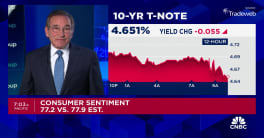Interthinx reported today that its Mortgage Fraud Risk Index dropped nearly 8 percent in the third quarter of 2012 and is five percent lower than in the third quarter of 2011. Despite a spike in the second quarter the Index is at the lowest point in two years.
Interthinx indices are based on the frequency with which indicators of fraudulent activity are detected in mortgage applications processed by the company's proprietary fraud detection software. The indices include a composite Mortgage Fraud Risk Index which measures the overall risk of mortgage fraud and four component indices:
- Property Valuation Fraud perpetrated by manipulating property value to create equity which is then extracted from loan proceeds by various means.
- Identity fraud is frequently used in mortgage fraud schemes in order to hide the identity of the perpetrators and/or to obtain a credit profile that meets lender guidelines.
- Occupancy fraud is perpetrated by investors who falsely claim the intent to occupy a purchased property in order to obtain a mortgage with a lower down payment and/or lower interest rate.
- Employment/Income occurs when an applicant's income is misrepresented in order to meet lender underwriting guidelines for a loan
Each Index is calibrated so that a value of 100 represents a nominal level of fraud risk, a value calculated from the occurrence of fraudulent indicators between 2003 and 2007 in states with low foreclosure levels. The national composite index level is now 137.
The number of metropolitan statistical areas (MSAs) classified at high risk for mortgage fraud declined from 91 in the second quarter to 70 in the third with California and Florida having the most MSAs (19 and 17 respectively) with that classification. Other states with multiple high-risk MSAs were Arizona, Colorado, New Jersey, and Oregon.
The MSAs with the highest risk levels were Merced, California (281), Stockton, California (246), Miami/Ft. Lauderdale (233), Yuba City, California (231), and Tampa/St. Petersburg (229).
Property Valuation Fraud Risk declined 11 percent from the second quarter to 203. This continues a downward trend in this type of fraud that began in early 2010. This index has declined 23 percent in two years.
The riskiest areas for this type of fraud are Merced which surged 23 percent quarter-over-quarter to a level of 498. Lakeland/Winter Haven Florida also saw a big increase, 21.7 percent, since the second quarter to an index level of 438 while Yuba City, with a more modest increase of 9.1 percent was third at 432.
The Identity Fraud Risk Index was down 1 percent from the second quarter to 145 and is down 24 percent over the last two years. None-the-less Identity Fraud was up dramatically in several locations. Midland and Lubbock Texas, Bellingham Washington, and Anchorage all had quarterly increases exceeding 165 percent resulting in scores over 240 in each case. Iowa City, Iowa has the highest number (134) on this index despite a quarterly decline of 134 percent and San Jose was second at 272 followed by the four cities previously cited.
The Occupancy Fraud Index was down four percent from the second quarter to 63. Lansing, Michigan had the highest risk of this fraud, 165, following a 143.7 percent quarterly increase. McAllen Texas was second and Monroe Michigan third after both areas experienced increases of 97 percent and 130 percent respectively.
Employment/Income Fraud Risk was highest in California with MSAs in that state occupying nine of the top ten positions. Salinas, Oxnard, and Los Angeles were the top three areas with scores all in the high 180s compared to the national level of 109. Nationally this type of fraud has increased more than 15 percent in the last two years.







